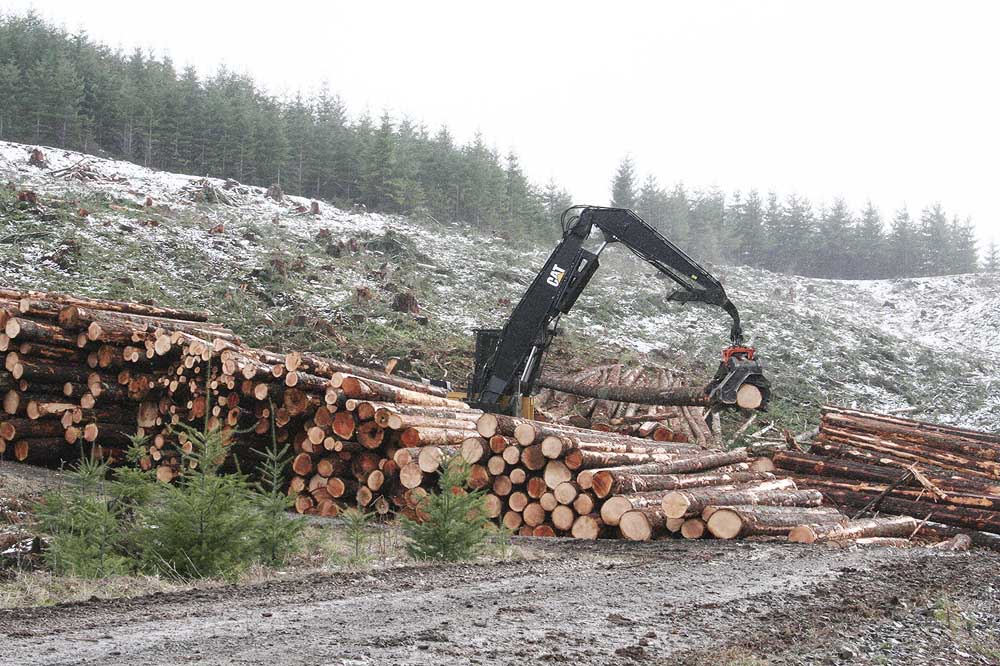$700 million manufacturing investment buttresses Oregon timber economy
Published 12:30 pm Tuesday, April 18, 2023

- Logging operations in Oregon's Coast Range Mountains.
ROSEBURG, Ore. — Roseburg Forest Products plans to spend $700 million for new and expanded manufacturing facilities over the next four years, an investment the company says will benefit Oregon forestland owners and the state’s timber economy.
Most of the money will go toward two new plants near Roseburg that will make engineered wood products from residuals such as chips, shavings and sawdust from the company’s other plants.
The first, called the Dillard MDF plant, will cost $450 million and make medium density fiberboard panels.
The other new plant, called Dillard Components, will cost $50 million and convert those panels into a new exterior trim product.
Together, the facilities will employ 120 workers when construction is completed in 2025.
Since the added manufacturing capacity depends on byproducts for a raw material, it won’t directly increase competition for logs or bid up timber prices, as would new lumber and plywood mills, said Gordon Culbertson, senior adviser with the Forest2Market timber industry consultancy firm. However, he said the investment reinforces the company’s commitment to the Northwest and strengthens the regional forest product industry’s economic health.
“It’s always good news for small forestland owners when companies make a financial investment in our communities. It indicates their resolve in using wood from our forests,” Culbertson said.
Some $200 million will go toward upgrading the Riddle, Ore., plywood plant, adding two new lathe lines and a hardwood plywood line. The Coquille, Ore., plywood plant will get a new dryer.
While environmental restrictions have constrained the Northwest’s wood supply, Roseburg Forest Products’ announcement can be seen as a vote of confidence in Oregon’s timber industry, Culbertson said.
The “big dollars” dedicated to the new facilities and equipment signals broader support for wood products, said Brooks Mendell, president of the Forisk timber industry consultancy firm.
“While these won’t translate into big increases in log consumption, they do represent a major commitment to local timber communities and the region,” he said.
Roseburg Forest Products, which was founded in 1936, owns about 600,000 acres of forestland as well as primary processing facilities that generate lumber and plywood.
Its secondary processing facilities align with the company’s vertically integrated strategy and ensure the “full utilization of our precious timber resource” by using residuals. The company estimates its $700 million investment is the biggest outlay in rural manufacturing in the state’s history.
“Our use of robotics, computer programming, and other advanced manufacturing tools aligns Roseburg with the high-tech evolution of manufacturing in this state,” said Grady Mulbery, the company’s president and CEO, in a press release.
Having a solid market for residuals ensures the company can extract the full value from the logs it harvests and buys, Culbertson said.
“It makes them a more viable producer,” he said.





